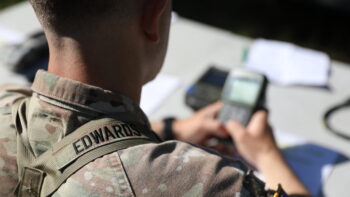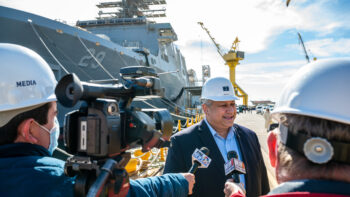
Defense Secretary Ashton Carter
WASHINGTON: Trust your robots. Trust your tech industry. Trust your troops. Let go of traditional mechanisms of control — be it a human pilot in the cockpit or a formal requirements document for a program — that increasingly serve to slow you down.
That was the message between the lines when Defense Secretary Ashton Carter and his protégé, Strategic Capabilities Office chief William Roper, spoke Friday afternoon at the Defense One Tech Summit. It’s not an easy message to hear for the military, with its deep-seated conservatism when people’s lives are at stake, or for Congress, with its zealous, jealous oversight of each taxpayer dollar. But it’s essential to the success of the new approach to high-tech warfare that Carter is calling the Third Offset Strategy.
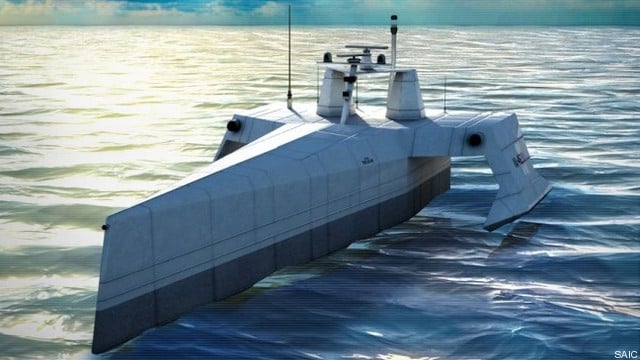
DARPA’s Sea Hunter (ACTUV) unmanned ship
Trust your Robots
Artificial intelligence is at the heart of the Offset Strategy, not to replace human judgment but to complement it. Such seamless partnership between man and machine — like the human and equine halves of the mythical centaur — requires trust between the two. Humans must learn to “quarterback” teams of autonomous war machines, Roper said, rather than each human operating one machine directly.
“The thing that’s scary… is that there’s no reason that the processing time and the reaction time from those (artificial intelligences) will not continually speed up beyond the human ability to interface with it,” said Roper. While the US will insist on human control of lethal weapons, even if that slows the response, others may not. “There’s going to be a whole level of conflict and warfare that takes place before people even understand what’s happening.”

Defense Secretary Ash Carter talks to Strategic Capabilities Office director William Roper at Submarine Base New London.
There’s a potential here for things to go very wrong, very fast. It could be like how unexpected interactions between different Wall Street firms’ electronic stock-trading firms triggered the “Black Monday” crash of 1987 — only this time with missiles flying.
So how do humans understand such massive and fast-moving machine intellects, let alone trust them? The Defense Advanced Research Projects Agency — the folks who brought you the Internet — just approved an initiative for “explainable AI,” said DARPA deputy director Steven Walker, speaking alongside Roper.
“Machine learning and deep learning algorithms…we don’t fully understand today how they work,” Walker said. The new “explainable AI” initiative “will give the human operator more details about how the machine used deep learning to come up with the answer.”
Deputy Defense Secretary Bob Work visiting Defense Innovation Unit (Experimental) in Silicon Valley
Trust your Tech Industry
It’s probably not the Pentagon, however, that will come up with the crucial breakthroughs in artificial intelligence. DARPA and other government agencies can provide incentives to work on particular problems, but the great ferment of new ideas is bubbling up in the private sector — and not the part of the private sector that traditionally deals with the military, either.
In the 20th century, world-shaking new technologies came from the Defense Department and its favored industry partners: the atomic bomb from the Manhattan Project, stealth from Lockheed and Northrop, the internet from the ARPAnet. In the 21st century, “we’re not going to drive a lot of those investments,” Roper said. “We’re going to have to become fast adapters of things that are developed without a single DoD (Department of Defense) requirement.”
Being a fast adapter requires overhauling the entire process of writing formal military requirements, issuing them to industry, and funding development of promising answers. Instead, the 80 percent solution may be available off the shelf from companies who would never bother to develop a custom-made 100 percent solution for as small a market as the military.
“We have a system that is basically meant to buy (the same) things over long periods of time, and the best things (possible),” said Carter, who spent much of his previous tour in the Pentagon bypassing the bureaucracy to acquire urgently needed technology like roadside-bomb-resistant trucks (MRAPs). “That’s a problem when you have ongoing operations and by the way it’s a problem in a rapidly changing world.”
Being a fast adapter also requires knowing what’s out there to adapt. Secretary Carter has pushed hard to bridge the cultural chasm between the Pentagon and Silicon Valley, establishing — and then overhauling — a Defense Innovation Unit Experimental (DIU(X)) to act as a point of contact in California. In May, he established a Defense Innovation Advisory Board chaired by tech billionaire Eric Schmidt, chairman of Google’s parent company Alphabet. On Friday, Carter announced three more members of the board: LinkedIn chairman Reid Hoffman; Steve Jobs biographer and historian of innovation Walter Isaacson; and retired Special Operations Command (SOCOM) chief Adm. William McRaven, an advocate for sci-fi style powered armor.
“We have constantly to work on… the impedance match between government and industry,” Carter said. “Not all of that gulf will ever be bridged, (but) we can change the way we operate to make us more connected to those who are agile.”
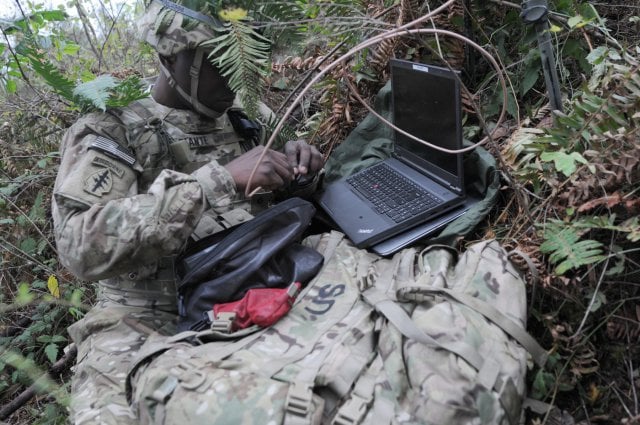
A soldier from the Army’s offensive cyber brigade during an exercise at Fort Lewis
Trust your Troops
If most military innovations arise from commercial industry, however, it’s not just the US armed forces that can get them: It’s anybody with a credit card. How does the American military prevail without technical superiority?
Already, the Islamic State — though neither a real state nor good Muslims — poses such a sophisticated threat online that the US has responded with previously undisclosed cyber bombs. “ISIL’s tradecraft in using technology to advance evil objectives both operationally and ideologically is unprecedented,” said Secretary Carter. “These guys are up to date — in that regard, not their thinking in general.”
And that’s just a terrorist group: Imagine how much more sophisticated Russia and China can get, just by buying technology on the global white, grey, and black markets.
“We’ve had a very good window (since) the end of the Cold war, where we’ve had technology the rest of the world hasn’t had,” said Roper. But historically that isn’t normal. In the future, he warned, “countries are going to have roughly the same kinds of capabilities. (That) doesn’t necessarily mean they’ll be able to use them with the same proficiency.”
The difference between Germany and France in 1940 wasn’t the quality of their tanks, nor the difference between Britain and France in 1805 the quality of their ships: In both cases the difference was the skill and creativity of the humans using the technology.
“If both sides are pointing at each other with the same kind of equipment… it’s going to boil down to the people,” said Roper. “There’s one significant advantage that we have(:) extremely experienced and proficient operators.”
“You’re going to see a higher level of proficiency required for operators, who are going to have to quarterback these machines,” Roper said. “(That requires) a completely new level of training, completely new level of coordination.”
That includes coordination across the different armed services, aka jointness. “The historical domains — between air, sea, and space — are going to blur (because) cross-domain effects are becoming much more realizable,” Roper said, be it a submarine firing Tomahawk missiles against targets deep inland or a hacker on the ground disabling a satellite. “In the future, we won’t talk single domains anymore, and we’d probably be wise quit talking about them now.”
While the American military has worked harder on joint operations than any other in the world, there are still plenty of bureaucratic seams. In particular, sometimes our traditions of secrecy impede the intellectual teamwork required to figure out how to best use a new technology.
“Future conflict is going to force increasingly joint operations (integrating) all our capabilities,” Roper told reporters on Secretary Carter’s plane after a recent trip to New England. “(But) the classified world tends to suffer the most from lack of integration, simply because the more sensitive it is, the fewer people there are to work on it.”
“We’re doing our best to fix this,” said Roper, whose Strategic Capabilities Office acts as a kind of matchmaker between promising technologies and would-be users. “The great thing about running my office is being a strategic partner. The Department has great engineering organizations — (e.g.) laboratories and warfighting centers; all they need is a little help integrating their tech into strategies.”
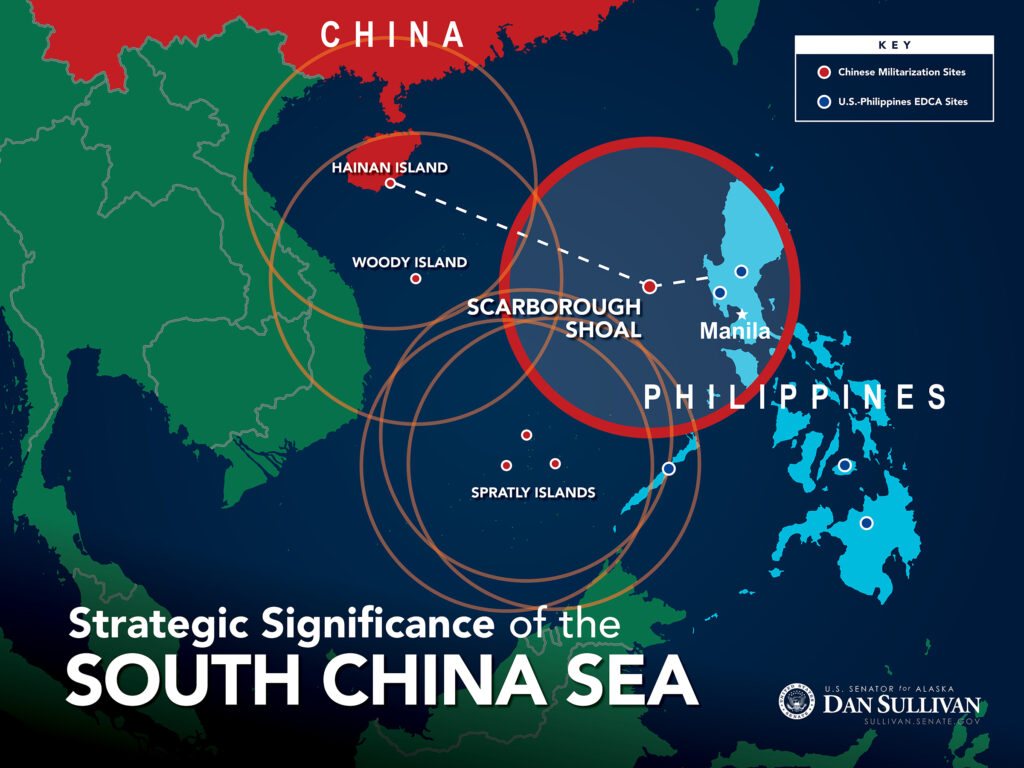
Graphic courtesy Sen. Dan Sullivan
Deterrence vs. Secrecy
Getting better communication within the Defense Department, and between the military and industry, doesn’t require declassifying everything. (There’s such a thing as too much trust). The trick is showing enough of your hand to deter potential enemies while keeping some trump cards hidden in case war does break out. But where’s the balance?
“For China and Russia, the question of what deters is a complicated one,” Roper said. “Both are acutely aware of our ability to field game-changing technology, so this is already part of their calculus.” If you want to change their calculations, you have to do more than develop amazing new technology: “What we want to show is our ability to do it faster, as well as applying it to legacy systems” — through upgrades like the arsenal plane or hypervelocity projectile — “while still protecting (i.e. keeping secret) our best options for conflict,” Roper said.
It’s strongly implied that the high-profile high-tech that the Strategic Capabilities Office has rolled out so far is just the tip of a very lethal iceberg. Hopefully the knowledge that iceberg is out there, even if they don’t know just where or how big it is, will make future adversaries steer more cautiously.
Lockheed, Howmet settle lawsuit over F-35 titanium (EXCLUSIVE)
Lockheed Martin alleged in court filings that Howmet cut off the supply of titanium after the aerospace giant refused to agree to higher prices, threatening production of the F-35.


















